FAQ
Here are some frequently asked questions about whitewater rafting excursions.
Your much-awaited, once-in-a-lifetime whitewater river trip has finally become a reality. You are so excited about the adrenaline rush of riding the rapids, camping out under the stars, and of course, the beautiful sceneries and moments.
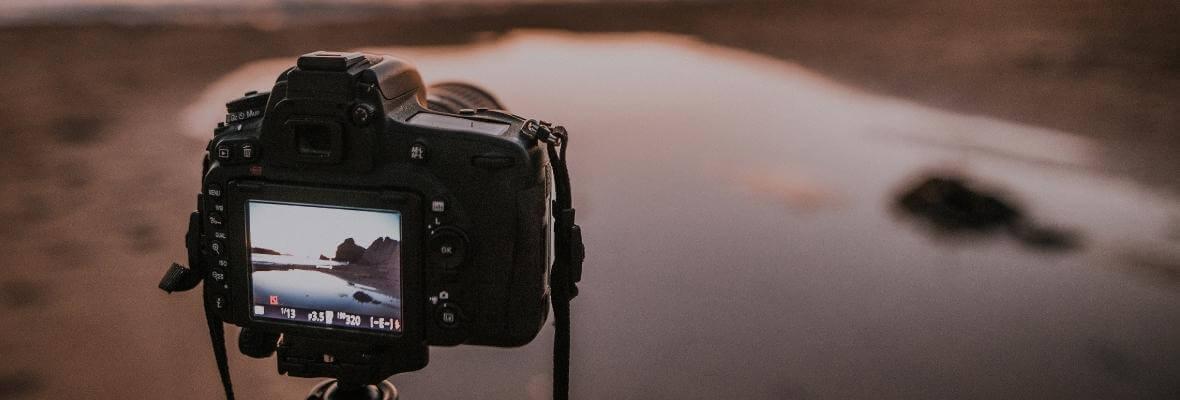
You no doubt want to capture these special moments and sceneries, making you wonder which camera to carry along. You worry because a rafting adventure is not like an ordinary tour. You and your camera are under constant exposure to so many elements of nature, like water, dirt, sand, and dust.
However, you needn't stress too much now that you are here!
Here are some tips about selecting the best camera gear and accessories to capture exceptional memories and even a few camera suggestions to help get you started!
Well, to help you make a choice, you first need to know your available camera options:
Many people use their smartphone as the camera for their trip, mainly for convenience. There's no need to carry an additional camera, thus saving their packing space.
However, with water all around you, and as cell phones are not waterproof, you need to protect them on the raft. And the best way to do this is with a waterproof pouch. It's even better if the bag comes with a lanyard so that the camera will be with you all the time. Besides, the pouch will keep your phone dry to use both on hikes and in the boats.
While you may want to look and edit the photos, it's better not to. You only end up draining the battery and may miss out on some mesmerizing views! It's instead better to just enjoy your trip, taking in the scenery around you. No matter which camera you use and how well the photos turn out, they rarely justify the beauty and scale of the canyon's true beauty.
And most importantly, if you plan on using your smartphone, don't forget to back up all your contacts, phones, and other data before setting out on your trip. Remember, a smartphone is not just a camera but a phone. And it carries in it so much sensitive data and information which you wouldn't want to risk losing in an accident!
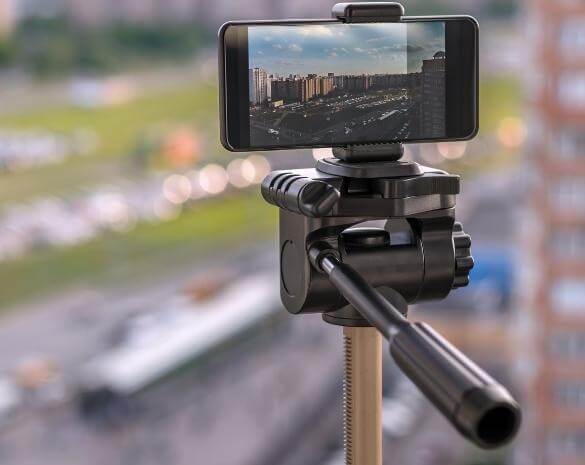
Small, convenient, and accessible
No need of buying a new camera
Readily available waterproof cases
There's the risk of losing your contacts, data, and photos, so you need to backup everything.
Not many zooming features
There's the risk of the cell phones shattering in the heat
Go Pros are ideal for use in a Grand Canyon river trip. Small and waterproof, the GoPro camera is just what you need for capturing some incredible footage and whitewater action on your journey.
They are the ideal camera choice for taking your adventurous selfies, planned sequences, videos, and so much more. GoPros are so familiar with rafters that many rafting companies have helmets with GoPro mounts on top, while their rafts' bows have GoPro mounts.
However, if you use a GoPro camera, make sure it has a wrist attachment to hang on the rail to continue recording even in the rapids. This is necessary because head and chest strap accessories aren't that useful on whitewater rafting trips.
Besides, there is the risk and chance of its unique wide-angle lens distorting perspective, thus making it difficult for you to get clear captures of far-off people and sceneries. You are better off with other cameras to capture spectacular views and routine shots of people.
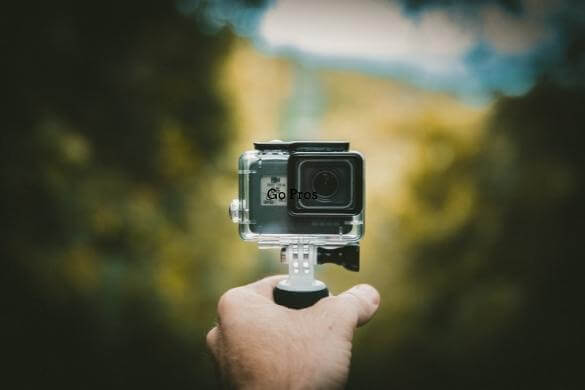
A good choice for capturing rapids action, especially with a strap hanging on the raft
Most cameras are high resolution and come with a waterproof case
Check the camera before buying as some don't have viewfinders, making it difficult to know what you film
Battery life can be an issue, so be selective while capturing shots
Point-and-shoot cameras are perfect for amateur photographers unaware of technical details like shutter speed, interchangeable lens, ISO, or aperture. Anyone can use them to capture exceptional trip memories.
Besides, these small, waterproof cameras offer built-in durability and are shock and dustproof. And their compact size gives these cameras a plus point compared to professional camera gear. You can easily pile them up and quickly pull them out from a small Ziplock or dry bag instead of buying a separate waterproof case.
You can even find some waterproof point-and-shoot cameras.
And last but not least, don't worry if your point-and-shoot gets damaged on the trip. You can quickly salvage the memory card without worrying about risking the entire phone or expensive equipment.
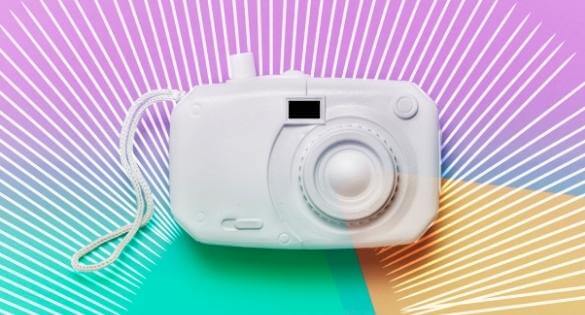
Small to fit and access even from small dry or Ziploc bags
You can either buy waterproof cameras or a waterproof case for protection from the water
It offers a lower resolution when compared to other cameras
Not everyone has a point-and-shoot or a waterproof model
There's no doubt that nothing captures memories better than a DSLR camera. However, these cameras are not recommended for whitewater rafting trips because they are not waterproof. While scuba divers use these cameras with underwater housings, the housings are massive, expensively priced, and difficult for above water use.
Besides, the DSLR is better only for use in calm river sections and on breathtaking hikes. And with most of the Grand Canyon offering so much excitement and spectacular views at practically every river bend, the DSLR won't be that good at capturing these memories.
And whenever you reach a rough patch, your guide will ask you to hang on with two hands. You will then have to keep both hands hanging onto the raft and not onto your camera! That's why many rafters prefer using GoPros for splashy and action shots and the DSLR for calm and scenic photos in flat water.
And yes, a waterproof or Pelican case is more than enough to protect your camera.
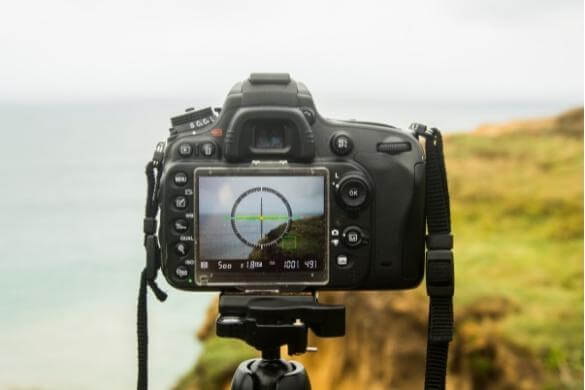
High-resolution camera
Can capture some specialty shots
Very sensitive to sand and water, so you need to watch your camera when on the Colorado river constantly
The water and shock padding and protection makes the cameras bulky and inaccessible
It's not just cameras you need to take on your river trip. There are also some essential camera accessories y9u need to carry along your Grand Canyon whitewater rafting trip.
A microfiber cleaning cloth is something photographers carry on trips to wipe and keep the camera lens clear of smudges and fingerprints. However, you have another need to bring them on your river trip.
You need to use them to wipe water drops on the lens. And yes, don't think you can also use some cotton cloth to wipe off water droplets. As the cotton may scratch your lens, photographers prefer using a microfiber cleaning cloth.
There may not be anything more essential for your trip than a ziplock bag because they have so many uses!
You can store your cleaning accessories in one bag and use another bag to store batteries and memory cards. Most importantly, these bags are just what you need to keep your belongings tidy, dirt-free, and well-protected from the water.

Sometimes the camera lens may end up with such a huge smudge that your microfiber cleaning cloth can't clean. In this case, a little lens cleaning solution can help quickly remove it.
However, many photographers don't recommend directly squirting the solution to your camera lens. Instead, it's better to first spray the solution on a microfiber fabric and then clean the lens with the cloth
And no, do not use water to clean lenses as water can damage it.
Sometimes even a microfiber cloth can scratch your lens while removing dust and sand particles from your lens, especially while outdoors. This is when a manual air blower proves helpful to first gently blow away the particles before wiping with a cleaning cloth.
However, be careful while using your air blower as those with compressed air cans may squirt liquid instead of air. And this liquid can damage your lens.
While ziplock bags help carry your accessories independently, you need a waterproof bag or case for your camera gear. These bags are usually soft and flexible, which creates a watertight seal by rolling and clipping together at the top.
And if you need some added protection and an extra dry bag, stuff a t-shirt at the bottom and top. The t-shirts, or any other clothing for that matter, provide vital double-layer padding to absorb any additional water when necessary.
These eight tips can help make your Grand Canyon whitewater rafting adventure more enjoyable and memorable!
Once you select your camera, the next question that crops to your mind is how you will charge your camera. Well, the best option you have is to bring a small, personal power bank for camera charging. They are affordably priced, portable, and have enough power to charge your camera a few times throughout the trip.
Always keep your camera protected from the surrounding damaging elements like sun, water, and fine sand while on a rafting adventure.
Use the appropriate camera gear and accessories, and take the proper measures to protect your camera.
As there's no chance of retrieving water-dropped cameras, it's always better to get insurance for your camera before leaving on your trip. Go through the different travel insurance policies to find a policy that includes personal gear insurance.
While you may want to go through your photos and edit them at the end of the day, do it after reaching home. Your actions will only quickly drain your camera battery.
Talking about your camera battery life, you need to pack your USB or standard 110V wall plug charger to charge your battery. Most guides have a portable power station you can use to charge your batteries.
However, as you will be sharing the power station with everyone on the trip, you will have to be careful while charging your batteries. Carrying extra batteries and your personal portable power bank provides uninterrupted battery life.
Always follow your guide's instructions. No matter how tempting the scenery or moment, maybe, if your outfitter tells you to hang on using two hands. Do just that, and don't hold onto your camera instead!
The National Park Service doesn't permit drones, even in the Grand Canyon National Park. So do not bring drones along, even if you are a professional and licensed drone pilot.
The best and easiest way to keep your camera safe is by storing it in the personal dry bag your guide provides during orientation. You can use the bag to store your camera, along with essentials you will need immediate access to on the trip, like sunscreen and bandana.
As long as you properly seal the bag, it does a great job of protecting your camera from water. Besides, if you still worry, you can always use a small waterproof bag or Ziploc bag inside the dry bag for an added protection layer.
While a Pelican case is also practical, you have to secure it with you on the boat. Besides, these cases are relatively difficult to access and open if you see something exciting and want to capture the moment quickly.
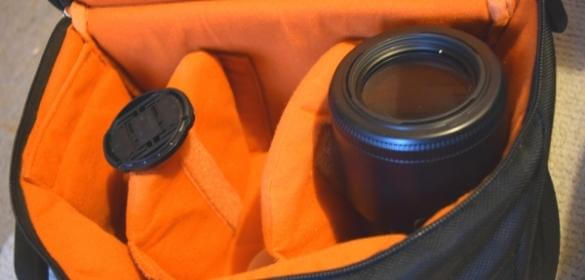
You can use waterproof pouches with lanyards to protect your cell phone. Having the lanyard around your neck keeps your phone readily available and near you all the time.
And as there's no WiFi service in the canyon, it's better to keep your phone in low power and airplane mode. It prolongs your battery life, which otherwise rapidly drains if it keeps searching.
As usual, you need a waterproof case to protect your GoPro actively and a strap to carry it easily.
You can choose between soft-sided and hard-sided waterproof camera cases. The hard-sided ones offer additional protection, while the soft-sided cases have a window for you to see and click photos.
However, no matter which case you choose, clipping a carabiner to the raft instead of putting it in a dry bag keeps your camera near you all the time.
Once again, you can choose between soft-sided and hard-sided cases for your DSLR. While most rafters prefer hard-sided cases, it adds bulk to your belongings. You also need a strap and additional carabiners to secure the camera to the raft.
While the soft-sided case keeps your camera more accessible, it may not protect your camera from getting smashed as people crawl around the raft.
As you can take any camera type on your rafting adventure, you will still want to know which best waterproof digital camera to carry along on your trip is. Making a decision isn't easy because you need to consider its integrity, durability, construction, and waterproof abilities.
You also need a camera that will capture movements while you go rafting, hiking, kayaking, camping, and so on. Keeping this in mind, here are five of the most popular cameras to choose from for your next whitewater rafting adventure.
This 4.6x optical zoom and 16.1 megapixels camera from Panasonic weighs 214 grams conveniently fits into your waterproof bag. It is waterproof up to a depth of 13m, letting you click photos both in and underwater.
The Lumix TS5 comes with built-in WiFi technology, thus offering outstanding additional and useful features. For example, you can snap images and immediately view them on the 3-inch LCD screen to easily share using its Near Field Communication feature.
You can also use the camera to record a video, even from a distance. The built-in GPS feature lets you identify your location, a bonus point if you get lost or need some direction. The camera also has an anti-motion blur feature that helps ensure your photos come out pretty clear.
Last but not least, the camera is also dustproof, keeping sand and dust particles out, and freezeproof to safely use in freezing waters with temperatures as low as -10-14 degrees F.
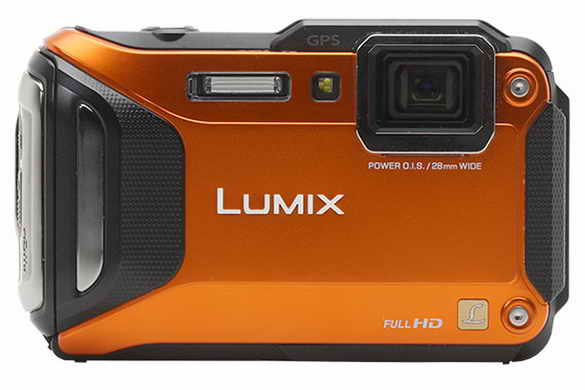
If you plan to go on extensive hiking trips to explore your surroundings, then the 16.1 megapixels Nikon Coolpix AW110 makes a better choice. Its built-in GPS and electronic compass indicate your location and nearby points of interest.
The camera's Nikon View NX2 software lets you share your adventures online whenever you want. And with its CMOS sensors, you can capture sharp images and low-light photos even without a flash.
The AW110 is not only waterproof but also shockproof, freezeproof, and crushproof, making it all the safer and better to carry on your adventure. Its 5x optical zoom feature, along with its anti-motion blur feature, helps you capture the best moments of your trip.
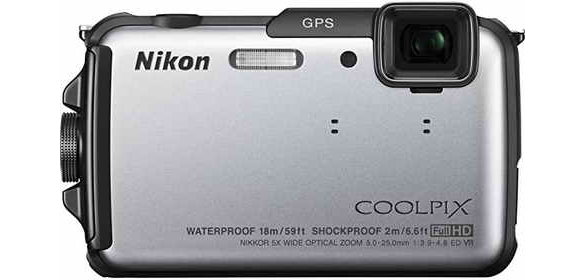
The 12 megapixels Olympus TG-2 iHS is a good choice if you plan to click great photos while on the rapids. The camera is built explicitly for underwater shooting, making it perfectly safe to use on the rushing rapids.
The 4x optical zoom camera comes with an ultra-bright and high-speed f2.0 lens to capture low light action. In addition to being shockproof, waterproof, shockproof, crushproof, and freezeproof, the TG-2 also has a water-repellent lens coating.
The benefit of this coating is that you can focus more on shooting pictures instead of wasting time wiping off water droplets. The camera's Lens-shift vibration reduction and automatic motion detection feature also provide better clarity in your photos.
The camera's GPS and encompass lets you mark your location on a map using a manometer that detects and records the spot's elevation and water depth. It also goes to the extent of warning you if and when you get too deep into the water.
And if you want to edit your pictures, the camera's 11 filters and beauty makeup mode helps make quick changes to your images.
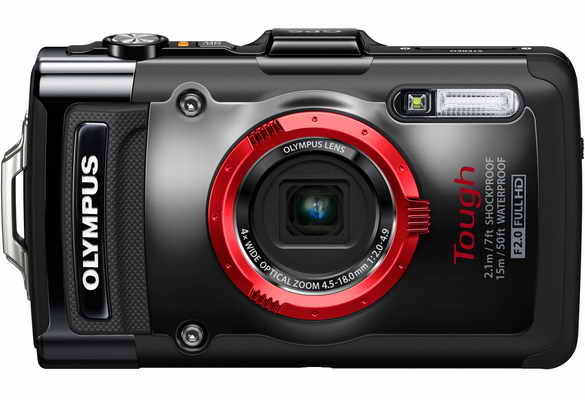
Thanks to its rugged-looking design and fast lens, the Pentax WG-3 GPS is more appealing for the adventurer. The 16.0-megapixel camera is lightweight at 8.4 ounces, adding to its convenience.
With its 6 LEDs, the camera provides macro mode shooting, shooting as close as 1 centimeter from the lens. The close 4x optical zoom feature is helpful for underwater shooting where targets have to be as close as possible to produce clear shots.
The Pentax WG-3 GPS is also shockproof, freezeproof, and crushproof like most waterproof cameras. It also comes with a built-in GPS that's useful for geotagging, while its digital compass comes with pressure, altitude, and direction sensors.
There is a unique and added feature, the WG-3 boasts of, which is its wireless or inductive charging ability, providing for better charging. The camera, however, has only one notable disadvantage, which is its poor low-light shots.
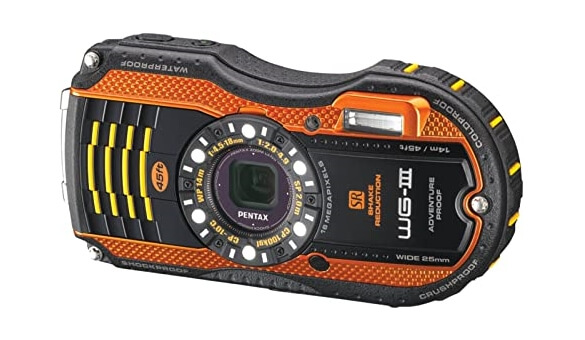
The 14.2 megapixels Nikon 1 AW1 is the most expensive waterproof camera because of its 11-27mm kit lens, the world's first interchangeable underwater lens. Besides, as all Nikon lenses are compatible with this sleek 5x optical zoom camera, you don't have to buy additional lenses if you are a loyal Nikon camera fan.
The waterproof, shockproof, dustproof, freezeproof, and crushproof camera is WiFi compatible, letting you conveniently share images as you want to. Lastly, the camera comes with a built-in GPS to help you know your bearings.
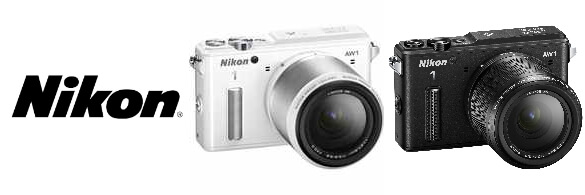
It is undoubtedly essential to select and carry the best waterproof camera on your whitewater rafting excursion. However, Looking for the right camera for your whitewater rafting trip is easier said than done.
There are quite a few things to consider while deciding how to capture great shots and record your lifetime experience. And the right camera proves its mettle if it can capture the best pictures of the most beautiful places.
This is why it makes sense that you should also know which trip to go on for the best views, especially if the primary purpose of your trip is photography. It's because the Grand Canyon National Park and Grand Canyon whitewater rafting trips have specific spots offering spectacular sceneries.
There are; accordingly, quite a few trips to choose from, each focusing solely on something unique to capture. For example, there are trips to capture the spectacular views of the Grand Canyon at sunset or sunrise, or other trips that let you capture pictures of the majestic Bald Eagle skimming across the canyon
Of course, it's eventually you who decides which camera lets you capture that shot which cerates memories whenever you look at it. Just remember not to leave home without a camera. Even a single-use waterproof camera is always better than nothing if you don't have a choice!
Here are some frequently asked questions about whitewater rafting excursions.
Pack light with only the bare essentials to make the most of your trip like:
A pair of good water shoes or sandals that protect your feet when you walk through slick rocks and keep your feet warm
Waterproof sunscreen and lotions
A strapped water bottle that you can secure in place
Extra plastic bags to carry your clothes and rain gear
Sunglasses, preferably with a strap
Towels to dry off and a set of clean, dry clothes to change into
Money to buy souvenirs, rental equipment, and perhaps tip your guide
The different white water rafting classes for the many rapids are:
Class 1 and 2 for float trips
Class 3 for basic, beginner rafting
Class 4 for intermediate to advanced rafters, a better choice for adventure rafters
Class 5 for advanced rafters and meant for experienced rafters.
Class 6 is the highest class that's extremely dangerous and unrunnable by most people, even some expert rafters
The eight best white water rafting destinations across the U.S. are:
Snake River in Wyoming
Colorado River in Arizona
Gauley River of W. Virginia
Salmon River of Idaho
Kennebec River of Maine
Youghiogheny River in Pennsylvania
Arkansas River in Colorado and Arkansas
Rogue River in Oregon
If you wonder how much you should tip your whitewater rafting guide, something between 5-20% of your total trip costs is quite enough.